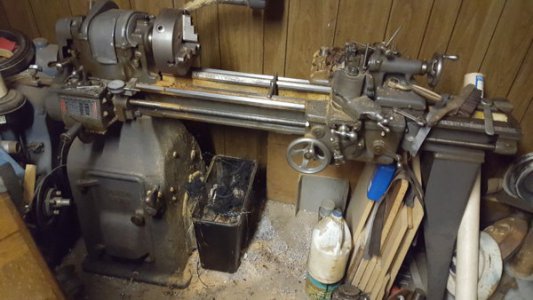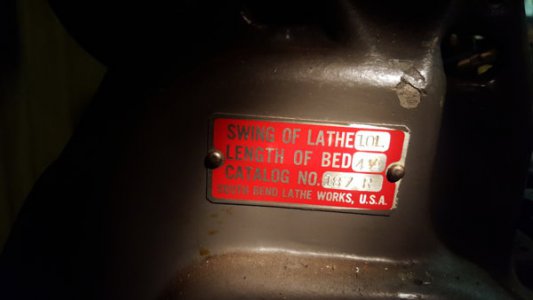Hey Guys,
I am new to the forum and hoping for some advice. Next month my wife and I are taking a road trip to pick up my grandpa's old Heavy 10 lathe. I enjoy gunsmithing as a hobby and this lathe was recently passed down to me. I am completely new to this type of equipment. My family doesnt know much about it either. From the research I've done, I've found that it is a 4 1/2" soft bed Heavy 10 SB lathe. My aunt hasn't given me the serial number yet, so I dont know exactly when it was made.
The lathe has been collecting dust in the basement the last 8-10 years. It may be difficult to remove from the basement because I have a feeling there is a lot of furniture and other heavy equipment around it. I'm think the best way to get it out of there will be to disassemble it and reassemble when I get it home. How difficult will this be? Any suggestions as to where I can find a manual or instructions on how to dissassemble? I only have 1 day to get it out of there and loaded into a U-Hual. I'd like to keep the thing assembled, but it appears to be pretty heavy and I think we have some tight corners and obstacles to get it out of there in one piece.
Any specific equipmnt I should look for that might go with this lathe? I literally know nothing about lathes at the moment and trying to research as much as possible before I head to WA to pick it up.
Also, any idea what this is worth? I'm going to get it either way because it has sentimental value to me, but it's going to cost us about $1,500-$1,700 to make the trip.
Thanks,
Aaron


I am new to the forum and hoping for some advice. Next month my wife and I are taking a road trip to pick up my grandpa's old Heavy 10 lathe. I enjoy gunsmithing as a hobby and this lathe was recently passed down to me. I am completely new to this type of equipment. My family doesnt know much about it either. From the research I've done, I've found that it is a 4 1/2" soft bed Heavy 10 SB lathe. My aunt hasn't given me the serial number yet, so I dont know exactly when it was made.
The lathe has been collecting dust in the basement the last 8-10 years. It may be difficult to remove from the basement because I have a feeling there is a lot of furniture and other heavy equipment around it. I'm think the best way to get it out of there will be to disassemble it and reassemble when I get it home. How difficult will this be? Any suggestions as to where I can find a manual or instructions on how to dissassemble? I only have 1 day to get it out of there and loaded into a U-Hual. I'd like to keep the thing assembled, but it appears to be pretty heavy and I think we have some tight corners and obstacles to get it out of there in one piece.
Any specific equipmnt I should look for that might go with this lathe? I literally know nothing about lathes at the moment and trying to research as much as possible before I head to WA to pick it up.
Also, any idea what this is worth? I'm going to get it either way because it has sentimental value to me, but it's going to cost us about $1,500-$1,700 to make the trip.
Thanks,
Aaron



